Genetics give individuals different types of shoulders. Some might be rounded, whereas others are a little flat.
That said, how do you achieve wider shoulders and sculpted deltoids through targeted exercises and balanced diet?
As a health and fitness coach, balancing a busy schedule and my commitment to widening my shoulders was a challenge. Yet, hitting the gym thrice a week became a non-negotiable part of my routine.
Keep reading to discover how I transformed my narrow shoulders into broad ones. I'll share a detailed guide with personal insights and tips on sculpting your deltoids.
Quick Summary
- To build wider shoulders, incorporate exercises such as barbell military press, dumbbell shoulder press, and upright rows into your routine.
- Consistency in shoulder workouts, at least three times a week, is crucial for significant shoulder development.
- Medial deltoids are key for achieving the 'cannonball' shoulder effect, with proper exercises leading to visible changes.
- In my opinion, while genetics play a role in shoulder structure, dedicated training and proper nutrition are decisive for widening shoulders.
The Secret to Building Wide Shoulders
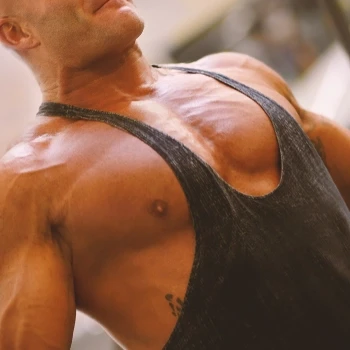
Beyond physical aesthetics and strength, having wide shoulders also brings about psychological benefits, bolstering self-esteem and positive body image, and enhancing the perception of attractiveness and dominance in social settings.
Are you aware that medial deltoids play an important role in filling the shoulders out and creating the cannonball effect? It also gives the shoulder its rounded appearance [1
A good workout routine can bring direct results to your shoulders.
I’ve poured my years of experience and learning into this guide, ensuring it’s not just informative but also a reflection of my personal journey, making it accessible and relatable to everyone, from beginners to seasoned fitness enthusiasts.
One of the best shoulder exercises for developing huge, wide deltoids is actually a back exercise.
Wide grip chin ups are almost second to none when it comes to expanding shoulder girdle girth and creating as much space as possible between shoulder ends.
See; it’s all well and good working on the medial deltoids and making that one area grow outwards, but you’ve got to remember that the medial deltoid is attached to an underlying structure.
In order to make the medial deltoids travel outwards and away from the body at lightspeed; it’s the structure they’re fixed to that needs to expand just as much as the muscles attached to it.
Wide grip chins are actually one of the best ways to create the enormous width you’re looking for; in fact, any back exercise that targets the outer head of your lats is. In reality, that’s pretty much all of them.
Integrating, squeezing and feeling the lats is something that many gym-goers struggle with intensely. See our guide on how to effectively train your back muscles.
Senior coach Tyler gives us his quick thoughts on building wider shoulders:

Best Exercises For Wider Shoulders
As with any muscle group; you’re going to need a combination of both compound and isolation exercises; some are always going to be more effective than others across different areas and for very different reasons.
You need to perform the exercises that are specifically going to lead to enhanced size and appearance rather than for strength. That's why most of the rep ranges will be range anywhere from 6 - 15 reps rather than 3 reps. This is all about growth over strength. The two are very different fitness goals.
With this in mind; let’s take a look at some of the most effective exercises you’ll need to perform. Here are hands down some of the best compound and isolation exercises to develop wider shoulders.
And if you don't want to use weights, check out these resistance band shoulder exericses.
1. Barbell Military Press
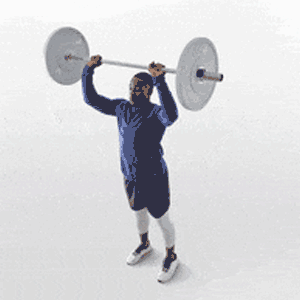
This is one of the best shoulder workouts around to help build muscles; perhaps even the best. It is called the "Military Press" because this movement used to be the general indicator or test of one's strength in the military.
In order to make it truly effective, the barbell needs to come down to the very top of the shoulder caps in order to fully extend the anterior deltoid head and stimulate as many fibers as possible [2
How-To: You can perform this movement in a variety of ways, but for the purpose of your goal performing the movement seated is going to be the best way to place as much stress as possible directly onto the shoulders without using any other body parts for momentum.
2. Dumbbell Arnie Press
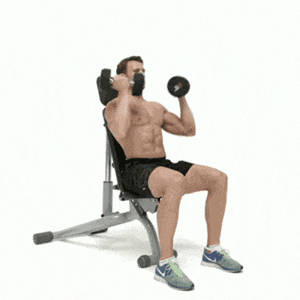
As the name implies; this exercise was made incredibly popular by Arnold Schwarzenegger.
This variant of the seated dumbbell press is a fantastic way to target every head of the deltoid array in one movement.
How-To: You start in a seated position with the dumbbells (and palms) facing inwards towards the shoulders before extending overhead and rotating them 180 degrees and outwards so that the palms are facing away from the body at the top of the movement.
3. Upright Row
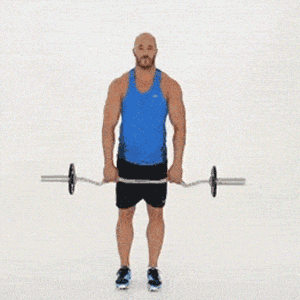
Upright rows are a fantastic exercise to target the trapezius whilst also integrating the anterior deltoids at the same time; it’s simply a great mass and shoulder muscles builder.
How-To: Use a bent “EZ” bar; this will accommodate your wrists in a more comfortable manner than a standard barbell leading to your enhanced focus on targeting the muscles without any distractions.
Ensure that you always squeeze at the very top of the movement and control the negative (downwards element) as this will ensure you fully “attack” the muscles in question.
This is a lift that requires good form for the best results and to avoid injury. Whenever working the shoulder area muscles, care must be taken to avoid injuring the shoulders. Avoid heavy weights with this exercise.
- Paul Rogers, Expert Fitness Coach
4. Seated Dumbbell Shoulder Press
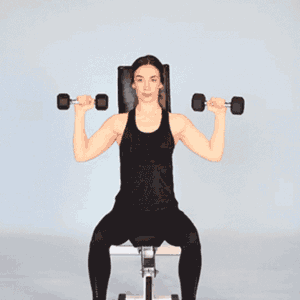
The seated dumbbell shoulder press, Jay Cutler's favorite exercise for front delts, is the standard version of the movement (the Arnie press being the more advanced version) that places strain primarily on the anterior deltoids.
How-To: To perform this movement you simply need to start with the dumbbells facing outwards (they should be placed just above the shoulder caps) and extend the arms overhead, ensuring you leave a slight bend at the elbow.
Always hold and squeeze at the bottom of each rep.
Tip: One of the biggest mistakes made when dumbbell shoulder pressing is to neglect the full range of movement; if you do not come down to just above the shoulder cap then you will not fully integrate all of the necessary muscle fibers.
5. Barbell And Dumbbell Shrugs
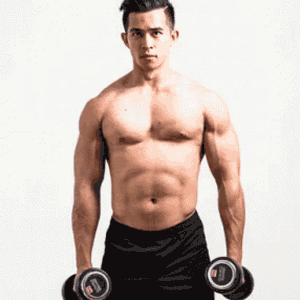
Shrugs are a crucial exercise when it comes to targeting the trapezius; this is however only the case when it is performed correctly as discussed earlier.
Dumbbells are a great way to perform this exercise in conjunction with the barbell variant as they allow for a slightly more comfortable hold.
How-To: You start with the dumbbells at hip height, just outside of the shoulder girdles and proceed to raise the shoulders up, before squeezing the trapezius at the top and returning them to the starting position.
6. Behind The Neck Smith Machine Press
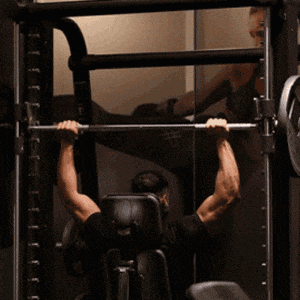
Whilst fairly controversial; this exercise is an amazing way to target the posterior deltoids as well as the anterior deltoids together in one seamless movement.
Why this is such a good exercise for integrating the anterior and posterior deltoids is because it forces the rear delts to contract and engage due to the position of the bar; it also creates an enormous stretch on the anterior deltoids, thus stimulating many fibers at once for growth.
How-To: Hands down the safest way to perform this exercise is on the smith machine due to the risk involved with destabilisation; you simply start with the bar placed behind the neck (just at the top of shoulder girdle height) and proceed to push up and overhead whilst leaving a slight bend at the elbows.
Related Article: How To Get Thicker Neck
7. Lateral Raises (All Varieties)
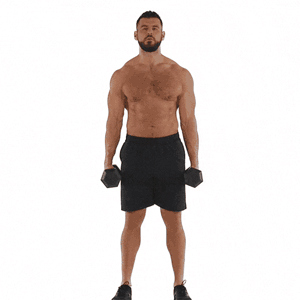
Lateral raises are one of the absolute best ways to target the medial deltoids. Any variety of the lateral raise is going to work wonders for the deltoid area, as long as your technique is infallible.
How-To: In order to perform a lateral raise; simply start with two dumbbells placed just outside of the hips (palms facing inwards) and proceed to elevate the dumbbells out and away from the body until they are directly in line with the shoulders.
Squeeze at this level, then return to the starting position but without letting the dumbbells rest against the leg to ensure tension is never released.
Tip: You should try performing this movement using cable handles, or by lying on a 45-degree incline bench too to promote true isolation and remove any integration of other body parts.
8. Alternating Dumbbell Front Raises
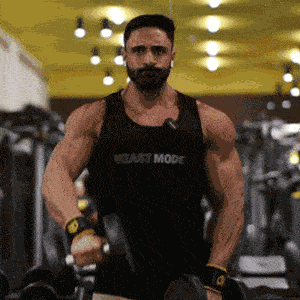
Front raises are a great way to isolate the anterior deltoids and are a very popular movement amongst gym-goers.
How-To: Start with the palms facing inwards (towards the hips) whilst holding a pair of dumbbells. Proceed to raise one arm upwards until it is in line with the front of the shoulder and parallel to the ground.
Squeeze at the top of the movement before returning to the starting position but without letting the dumbbell rest against the hip.
Tip: Never, ever swing or rush this movement as it will totally nullify its effect on the shoulders; use control and a slow pace and ensure that the movement “flows” smoothly.
9. Reverse Fly (All Variants)
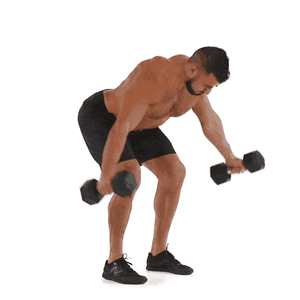
This is a relatively tricky exercise to perfect but once you do; you will be rewarded with not only great posture but also a set of finely rounded shoulders.
How-To: Grab a pair of dumbbells and ensure the palms are facing inwards towards the body. Bend the body over to a 45-degree angle, before raising the arms backwards and away from the body. Squeeze the shoulder blades at the very top of the movement before returning to the starting position.
This movement can be performed lying flat on a bench, sitting on a pec deck in reverse position or by using cable handles as well; all of which are highly effective.
Tip: For a little variety it’s sometimes a good idea to have the arms in a “Y” shape too in order to really accentuate the outer head of the posterior deltoids.
10. Face Pulls
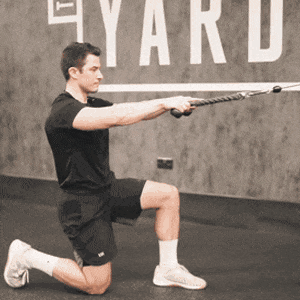
The face pull is not only a really good trap isolation exercise; it hammers your rear delts too.
How-To: Grab a cable pulley rope and set the height so that it’s in front of your face.
With the arms outstretched; proceed to pull the rope back towards the face and allow the handles to separate and run by the side of each cheek.
Tense and pinch the shoulder blades together at the very back of the movement before returning to the outstretched position. Ensure you leave a slight bend at the elbows to keep the tension on the muscle in place.
11. Plate Raises
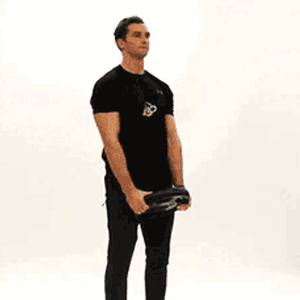
This is a good one for targeting your traps and anterior deltoids; think of it as a hybrid between a shrug and a front raise.
How-To: Grab a weight plate; then proceed to place your hands in a double overhand grip on the plate with them positioned just inside the shoulder girdles.
Elevate the plate so that it is in line with the front of the shoulders; squeeze the delts and traps, then return to the starting position but without allowing the plate to touch the hips to keep the tension on.
3 Shoulder Workout Plans
Here are some great examples of broad shoulder workout sets for you to follow in order to develop the aesthetics (appearance) you desire.
1. Workout: All Out Mass
Perform the following exercises over a series of three sets. Aim for between 6-8 reps per set (unless stated otherwise) and take no longer than 90 seconds rest in between sets.
- Seated barbell military press
- Seated behind the neck smith machine press
- Upright rows
- Barbell wide grip shrugs (12-15 reps per set)
- Dumbbell narrow grip shrugs (12-15 reps per set)
- Face pulls
2. Workout: Isolation Specific
Perform the following exercises over a series of four sets. Aim for between 12-15 reps per set (unless stated otherwise) and take no longer than 60 seconds rest in between sets.
- Standing alternating dumbbell front raises
- Weight plate front raises
- Seated dumbbell lat raises
- Lying individual dumbbell lat raises (using a bench on a 45-degree angle)
- Cable crossover reverse flys
- Pec deck reverse flys
- Narrow grip barbell shrugs
3. Workout: The All-Rounder
Perform the following exercises over a series of three sets. Aim for between 8-10 reps per set (unless stated otherwise) and take no longer than 60 seconds rest in between sets.
- Seated dumbbell Arnold press
- Seated smith machine barbell military press
- Cable lat raises (15 reps per side)
- Lying bench dumbbell lat raises (15 reps per arm)
- Alternating dumbbell front raises (15 reps per arm)
- Barbell wide grip shrugs
- 45-degree bench dumbbell reverse fly’s (15 reps)
These three wide shoulder workout blueprints will absolutely deliver a hard punch to every head of the deltoids and you should give one of them a shot on your next shoulder day.
Some Extra Tips
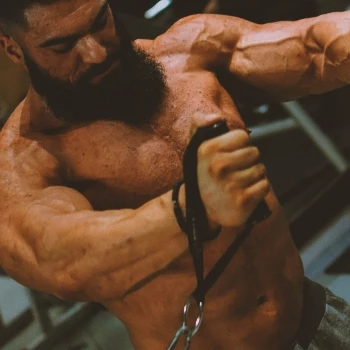
- Include a combination of isolation and compound exercises as part of your training if you want to create the biggest difference possible
- Never neglect your nutrition - ineffective fuel leads to ineffective training and no return for your efforts
- Develop your mind / body connection - the more aware you are of your target muscle zones, the more you’ll begin to learn about when they are and are not being targeted effectively
- Slow everything down - weight training isn’t a race. In this instance, the tortoise really will beat the hare. This is because he’ll lift weights with control and great technique without rushing and as such be rewarded with an incredible physique. Otherwise, you risk injuring yourself in the long run, especially when you do some intense weight training within a short time period.
Supplements
Protein Powder
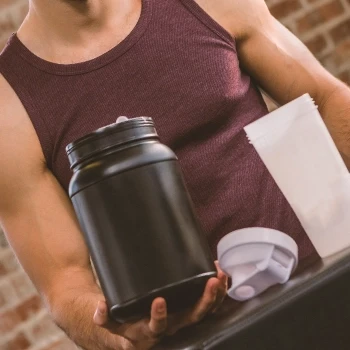
It's pretty simple, if you're not getting enough protein in your diet then you're not going to be building muscle. Protein synthesis is a key component in repairing and building new muscle.
You can try and get all your protein from real foods, but trying to eat 160g + of protein can get pretty tedious.
Or you can supplement with protein powder. You can down one shake in 2 seconds and that's 20g+ of protein right there. Easy.
Creatine
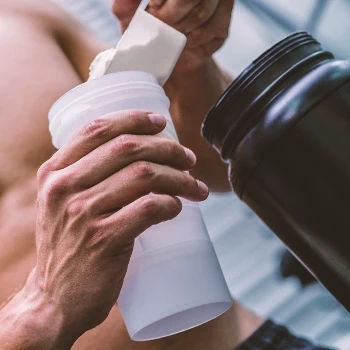
When it comes to supplements, creatine has become one of the ‘must-have’ supplements.
There have been numerous studies on done creatine on effective it is improving physical performance as well as gains in fat/bone-free mass.
Additionally, it's reported that there are very little negative side effects making it safe for short term and long term use.
Testosterone Boosters
Testosterone is necessary to develop a stronger and more muscular physique as well as improving your physical performance.
A lot of men suffer from below-average testosterone so a natural booster will help with that.
References:
- https://pubmed.ncbi.nlm.nih.gov/24947920/
- https://www.livestrong.com/article/294070-muscles-used-in-a-military-press/
About The Author
You May Also Like
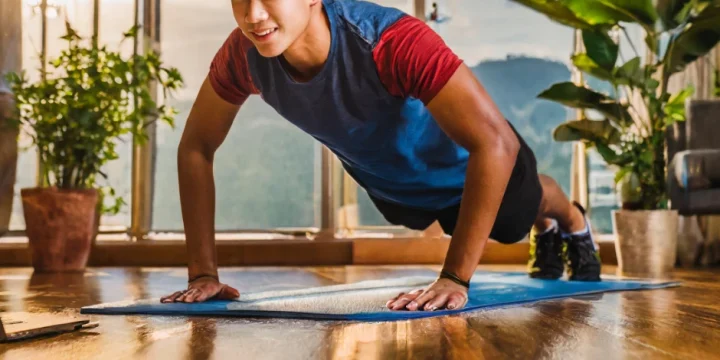

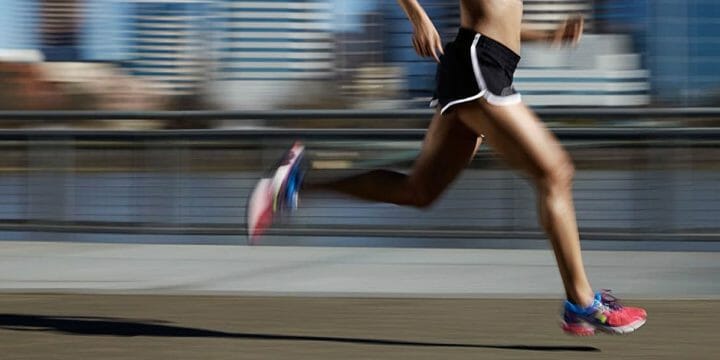
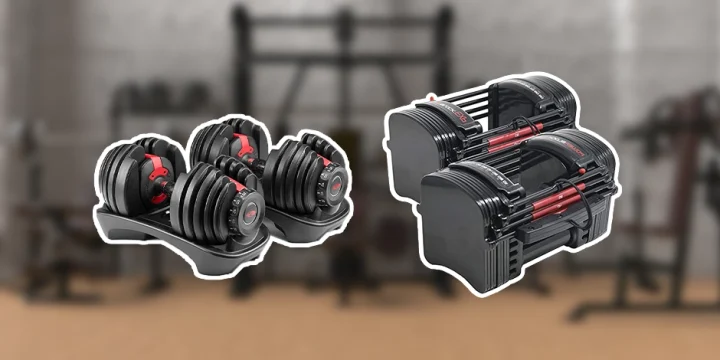
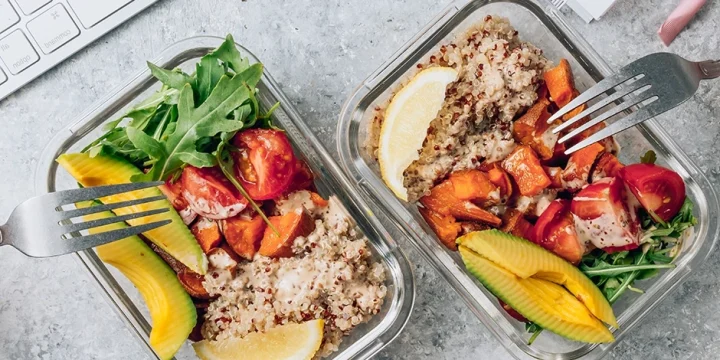
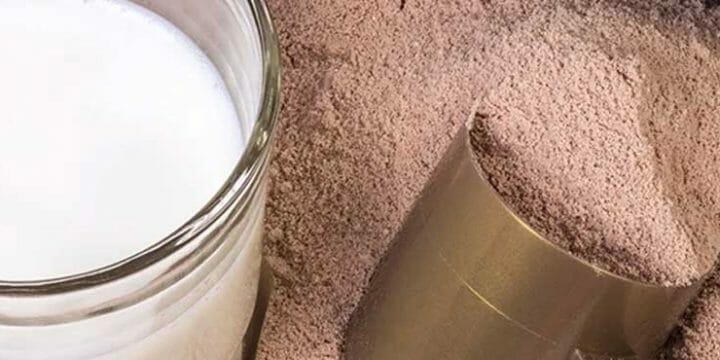
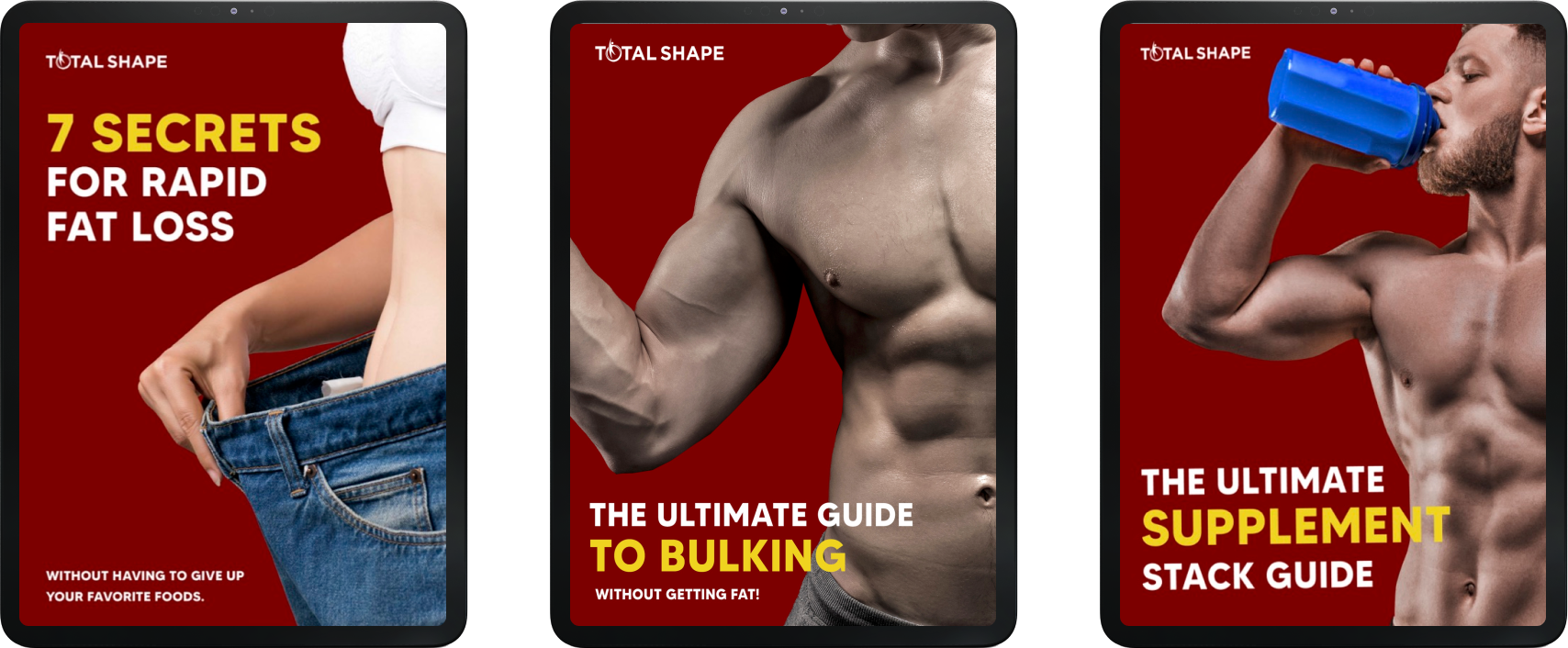
This article is a complete guide on how to get wide shoulders. Gotta add these exercises to my shoulder workout!
I’ve been finding exercises on how to make your shoulders wider. Glad I stumbled into this one.
Thank you for these workouts for wider shoulders. I’ve been incorporating these varied intensity approaches, as well as cable raises, over the last few months, and my delts are finally growing. I can’t believe it, they’re even starting to show some light striations!